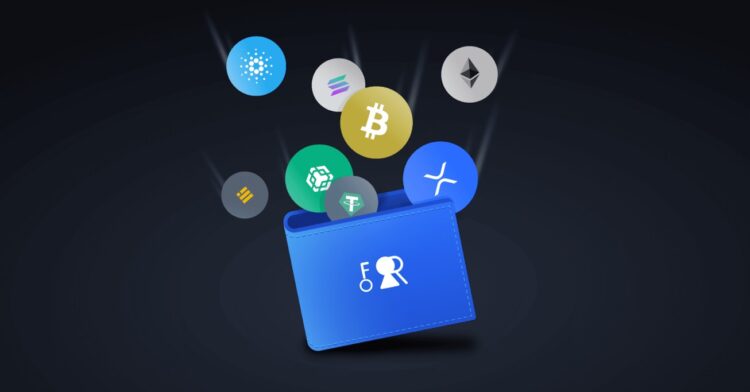Crypto wallets are deceptively simple. To users, it’s just an app: send, receive, maybe browse NFTs, maybe log in with Face ID. Behind the scenes? You’re stitching together encryption layers, decentralized networks, regulatory tooling, and increasingly, machine learning to stay competitive.
The goal isn’t just to “store crypto.” It’s to build something people trust with their money – something they use daily without friction, hesitation, or fear.
Let’s Start With the Real Complexity
Every wallet looks simple until you try to:
- Support multiple blockchains (ETH, BTC, Solana, Polygon)
- Handle seed phrase generation and recovery securely
- Build a UI that doesn’t confuse non-technical users
- Integrate KYC if you’re operating in Europe or the Gulf
- Store NFTs with decent UX (media previews, metadata rendering)
Most cryptocurrency wallet development projects fall apart because the team underestimates just how much context is required to get it right.
Not just code. Product decisions, compliance assumptions, and user behavior patterns.
Tools That Matter (and Ones That Waste Time)
The current stack in most production wallets:
- Frontend: React Native or Flutter for cross-platform support
- Wallet core: Ethers.js, WalletConnect, BIP39, custom key vault logic
- Blockchain connection: Infura, Alchemy, or direct RPC
- NFT modules: Moralis or Reservoir for token ownership + OpenSea-style previews
- Security: Hardware enclave APIs (iOS Secure Enclave / Android Keystore), AES encryption, biometric auth
One real-world wallet MVP we saw shipped with:
- Flutter frontend
- Web3Dart logic for Ethereum
- PostgreSQL backend + Redis for session handling
- i18n-ready UI for Arabic and English
- Full cold/hot wallet toggle feature (rare but powerful)
Timeline? Realistically 10–14 weeks for something stable and testable, assuming daily team focus.
Where AI Starts to Matter
If you’re building this in 2025 and not using AI at all, you’re wasting time.
AI won’t sign a transaction for you. But it will:
- Parse user intent: “Send $50 to John” -> proper formatted transfer
- Detect fraud patterns in address reuse or spending habits
- Personalize UX: suggest recently used tokens, common contacts
- Simplify onboarding with LLM-powered tooltips and walkthroughs
One team we know plugged in an OpenAI model via serverless function just to translate prompts into wallet actions. It reduced failed transactions by 22% in the first 30 days.
NFTs Make It Even More Interesting
NFT support isn’t just a checkbox. It involves:
- Token standards: ERC-721, ERC-1155, and the quirks between them
- Media previews: images, videos, audio
- Metadata parsing: on-chain and off-chain
- Display logic: wallet view vs. marketplace-ready formatting
This is where specialized NFT development companies come in. You need a UI that handles 50 NFTs gracefully, handles IPFS/CDN fallbacks, and knows how to display locked vs. revealed content.
For an NFT-focused wallet, expect 5–8 additional weeks depending on how deep you go into gallery vs. marketplace behavior.
What Most Teams Forget
The tech stack isn’t the issue. It’s the orchestration. The real blockers:
- Inconsistent design language between wallet features
- Legal stalling on KYC vendor selection
- No QA team to test key backup/recovery flows
- Language/RTL issues when launching in the MENA region
- Post-launch support team not ready to triage wallet sync bugs
S-PRO has seen these problems up close. As a custom wallet development team like S-PRO, they often enter at the point where founders have an app that mostly works but can’t ship it.
What Kind of Team and Timeline Do You Really Need?
Let’s talk brass tacks. A full-featured crypto wallet MVP – including seed management, blockchain connectivity, basic NFT support, and AI-enhanced UX – typically requires 12 to 16 weeks of dedicated work.
The minimum viable team includes:
- 1 Product Owner to prioritize features, maintain roadmap, and oversee delivery
- 2 Frontend Engineers (React Native or Flutter)
- 1 Blockchain Developer for wallet logic, key signing, and RPC setup
- 1 Backend Engineer for KYC, session handling, notification systems
- 1 QA Specialist for multi-device testing, security flows, and E2E test coverage
- 1 UI/UX Designer familiar with wallet UX best practices
- Optionally: 1 AI/ML Engineer to integrate language models or anomaly detection
Planning to support multiple blockchains or launch in multilingual regions? Add +2–3 weeks for integration, plus localization testing.
Skipping QA or product discovery? Expect bugs in recovery flows or compliance deadlocks. Cutting corners with security? You’ll get flagged – or worse, exploited.
A smart team that’s done this before can keep momentum up, spot blockers early, and reduce your burn rate long-term.
Final Takeaway
Crypto wallet development in 2025 isn’t about code alone. It’s an ecosystem challenge. UX, AI, blockchain, compliance, and growth all need to align. Teams that don’t respect that build apps that die quietly.
If you want to build something that lasts – and scales – you need strategic tech partners who’ve already solved these problems for others. They help startups and fintechs build crypto and NFT wallets that aren’t just functional, but future-proof.




